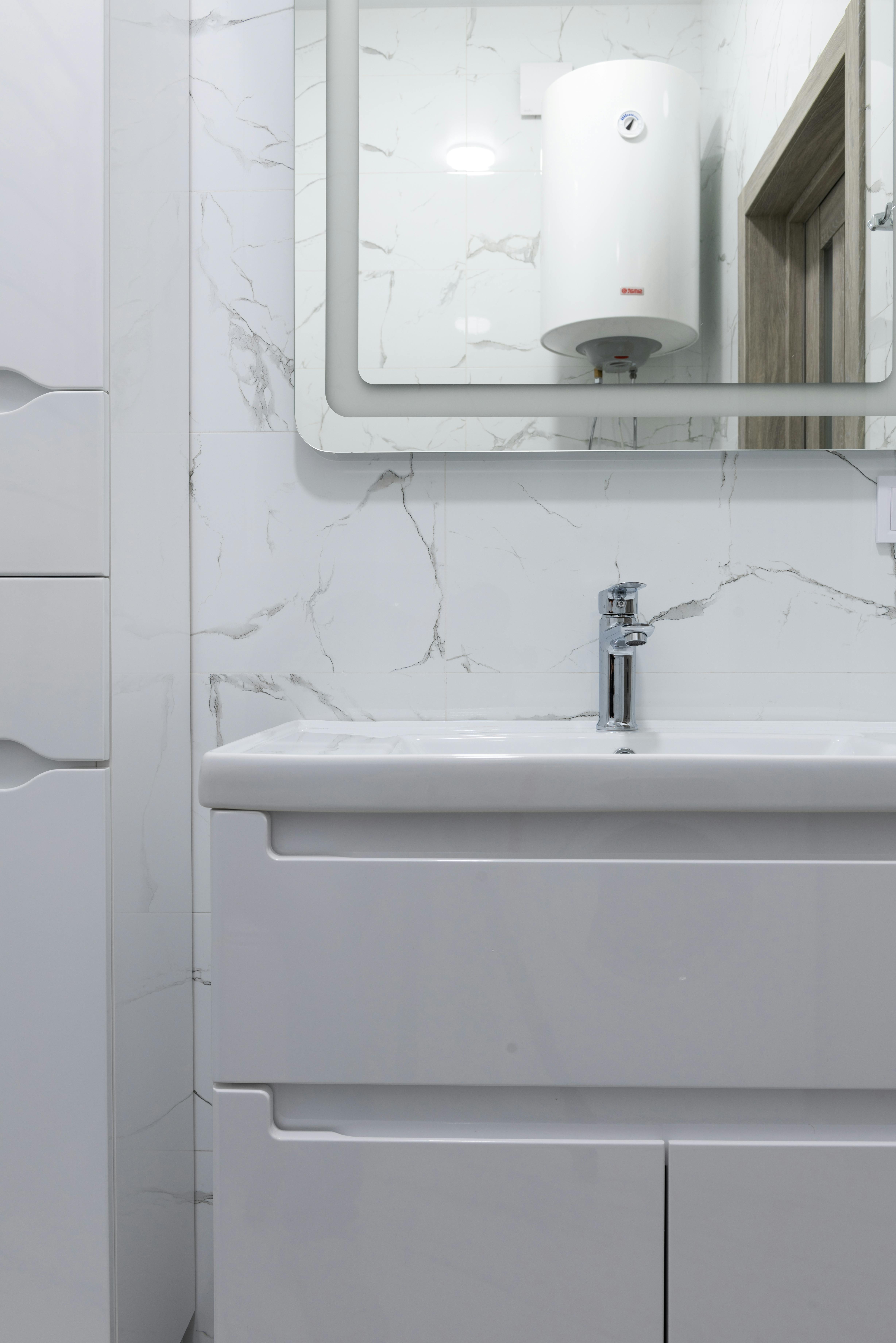Revamp Your Home with a Tankless Water Heater Installation Guide
By Brian on August 15, 2023
Introduction
Is your water heater on its last legs? Or maybe you’re tired of running out of hot water in the middle of a shower? If so, it’s time to consider upgrading to a tankless water heater. This comprehensive guide aims to provide a step-by-step tankless water heater installation guide to help you revamp your home. In the upcoming sections, we will delve into the benefits of tankless water heaters, pre-installation considerations, a detailed installation guide, cost implications, and maintenance tips. This guide is perfect for homeowners or business owners in Northern California dealing with water heater issues and looking for a more efficient and reliable solution. Get ready to say goodbye to your old water heater and hello to endless hot water with a tankless water heater.

Understanding the Benefits of a Tankless Water Heater
If you’re contemplating the leap from a traditional water heater to a tankless model, you’re likely wondering what the benefits are. Appreciating the key advantages of a tankless water heater can help you make an informed decision and reap the full benefits of this modern, efficient system.
Energy Efficiency and Cost Savings
The primary attraction of a tankless water heater is its energy efficiency. Unlike traditional models, which continuously heat a large tank of water, tankless models only heat water when it’s needed. This on-demand operation can lead to significant energy savings, and consequently, cost savings on your utility bills.
According to the U.S. Department of Energy, tankless water heaters are 8%–34% more energy-efficient than traditional tank heaters. This percentage can translate into substantial savings, especially if your household uses a considerable amount of hot water daily. The average operating costs for the major types of tankless water heaters show that natural gas models, for example, can cost between $192-$264 annually to run.
Space-Saving Design
Another advantage of a tankless water heater is its compact design. Traditional water heaters require a large tank, which can take up substantial space in your home. In contrast, tankless models are compact and can often be installed in a garage, attic, basement, or utility closet without sacrificing floor space.
This space-saving benefit is particularly advantageous for homeowners with smaller properties or those looking to declutter and maximize their available space.
Continuous Hot Water Supply
One of the most appreciated benefits of a tankless water heater is the continuous supply of hot water. Traditional water heaters can run out of hot water after heavy use, requiring you to wait for the tank to refill and reheat. On the other hand, a tankless water heater heats water on demand, ensuring a constant supply of hot water, no matter how many showers are taken or dishes washed.
This continuous hot water supply makes tankless water heaters a popular choice for large families or households with high hot water usage. No more deciding who gets the hot shower in the morning; with a tankless water heater, everyone can enjoy a hot shower whenever they want.
In summary, a tankless water heater offers energy efficiency, cost savings, a space-saving design, and a continuous hot water supply. These benefits make it a worthy investment for homeowners seeking a more efficient and reliable hot water solution.
Pre-Installation Considerations for a Tankless Water Heater
Before you dive into the world of tankless water heaters, it’s important to consider a few key aspects of your home. Making these assessments early in the process will not only save you time and possible complications down the road, but it will also help ensure that your new tankless water heater operates at its maximum efficiency.
Assessing Your Home’s Gas Line Capacity
The first thing to consider is your home’s gas line capacity. Tankless water heaters require more gas when they fire on than a water heater equipped with a storage tank, and may even require more gas than some large home furnaces. This is due to the fact that they heat water on-demand, meaning they require a significant amount of energy in a short period of time. As a result, you may need to upgrade your home’s gas line to accommodate this increased demand. In most cases, you may have to increase the size from a 1/2-inch to a 1-inch line. It’s recommended that this task be handled by a licensed contractor to ensure safety and adherence to local building codes.
Determining the Ideal Location for Installation
Next, consider where your new tankless water heater will be installed. Unlike traditional water heaters, tankless units are compact and can be installed in a variety of spaces such as a garage, attic, basement, or utility closet. However, keep in mind that they need to be piped directly to the outside for venting purposes. This requirement may limit your options for installation locations.
Choosing the Right Size of Tankless Water Heater
Lastly, you’ll need to choose the right size of tankless water heater for your home. This will depend on your household’s hot water demand, which is determined by the number of people in the house and the number of appliances that require hot water. Measure the space you have available for your water heater carefully so you can accurately judge what size water heater will fit.
By considering these factors ahead of time, you’ll be better prepared for your tankless water heater installation. If you find the process overwhelming or if you’re unsure about any aspect of the installation, don’t hesitate to consult with a professional plumbing service to ensure a smooth and successful installation.

Step-by-Step Guide to Tankless Water Heater Installation
Embarking on a tankless water heater installation can be a daunting task. However, with the right tools, knowledge, and a little patience, it can be a rewarding DIY project. Here’s a step-by-step guide to help you through the process.
Removing the Old Water Heater
First things first, you need to get rid of the old water heater. Ensure all water supply to the heater is turned off. If your unit doesn’t have a shut-off valve, you may have to turn off the main water supply. Also, switch off the gas supply valves and any power feeding the unit. Drain the heater completely. If the water is hot, make sure you use a hose that can withstand the heat. Disconnect the heater from the water and gas lines, and dispose of it responsibly.
Mounting the New Tankless Water Heater
Once you’ve cleared out the old unit, it’s time to mount your new tankless gas water heater. Remember, these heaters are direct-vent only, meaning they need to be piped directly to the outside and not through a chimney. Measure the space carefully to ensure the heater fits perfectly.
Installing the Gas Line
For your tankless water heater to function efficiently, it requires a gas line and adequate combustion air. This process often involves upgrading your gas line, which should ideally be handled by a licensed contractor. The heater may require more gas than large home furnaces, so ensure your gas line can handle the load.
Setting Up New Water Lines
Next, connect the water heater to the new water lines. Make sure to follow all local plumbing codes when sourcing and installing parts for your new water heater.
Installing the Pressure Relief Valve
The pressure relief valve is a crucial safety feature of your water heater. It releases pressure if it builds too high in the system due to water overheating. Install this valve according to the manufacturer’s instructions and check for leaks.
Setting Up the Exhaust Vent
The exhaust vent is a critical part of your gas tankless water heater installation. Depending on the manufacturer’s instructions, you may need to use a vent kit. Ensure the vent is pointing towards the outside and secure it in place.
Turning On the Water and Starting the Heater
Finally, it’s time to turn on the water and start your new heater. Open a faucet to full “hot” to purge air from the water pipes and heater. Once done, turn the faucet off, plug in the heater, and insulate the hot water pipe coming from the heater. Turn on the gas, and follow the manufacturer’s start-up procedures.
Remember, while the installation of a tankless water heater can be a DIY project, it does require technical knowledge and strict adherence to safety procedures. If you are unsure at any point, consider reaching out to a professional plumbing service to help ensure a successful installation.
Cost Implications of Installing a Tankless Water Heater
Investing in a tankless water heater is not just about the upfront cost of the unit itself, but also involves considering other cost factors that come with its installation. These include the brand of the heater, labor costs, and potential conversion costs.
Cost of the Heater Unit by Brand
The brand of the tankless water heater plays a significant role in defining its price. Renowned brands like Noritz and AO Smith typically charge between $500 and $1,550, while newer brands like EcoSmart offer options in the $170–$1,600 range. It’s essential to remember that while premium brands may cost more upfront, they often offer superior warranties and customer service, which can save you money in the long run.
Labor Cost for Installation
Apart from the cost of the heater unit, labor expenses also contribute significantly to the overall installation cost. On average, technicians charge around $50–$150 per hour, with the total installation time ranging from 2 to 8 hours. This means that labor costs can add another $500–$1,500 to your budget. If your installation requires additional repairs or painting, you can expect to pay approximately $200 more.
Conversion Costs and Additional Cost Factors
If you are switching from a traditional tank-based water heater to a tankless system, you may also have to budget for conversion costs. This could involve upgrades to your home’s electrical system, gas line, or venting system to accommodate the new unit.
Furthermore, there are additional cost factors to consider, such as the cost of permits, materials needed for installation, potential changes to your home, and even the cost of dealing with hard water. For instance, tankless models are more affected by mineral buildup than tank water heaters, so if you live in an area with hard water, you might need to install a whole-home water softener system.
In conclusion, while the upfront cost of a tankless water heater might seem high, the long-term advantages of lower energy bills, endless hot water supply, and space-saving design make it a worthwhile investment. A thorough understanding of all these cost factors can help you plan your budget effectively and ensure a smooth, hassle-free installation process.

Maintaining Your Tankless Water Heater for Longevity
Now that you have your tankless water heater installed, it’s crucial to keep it in optimal condition to prolong its lifespan and maintain its efficiency. Regular upkeep not only ensures a continuous supply of hot water but also prevents unexpected breakdowns and costly repairs. Here are some essential maintenance steps to follow.
Regular Cleaning and Descaling
One of the key maintenance tasks for a tankless water heater is regular cleaning and descaling. Over time, minerals present in the water can build up inside the heater, affecting its performance. Descaling involves flushing out these mineral deposits, typically once a year, using a descaling solution.
To clean your tankless water heater, you will need to turn it off, disconnect the power source, and close the shut-off valves. Then, you can connect a flushing kit to the service valves and circulate the descaling solution through the unit for about an hour. Once done, flush the system with clean water to remove any residual solution, then reconnect the power source and turn the unit back on.
Annual Professional Inspection
While some maintenance tasks can be performed by the homeowner, it is highly recommended to have your tankless water heater inspected by a professional annually. A licensed plumber can perform a comprehensive check of the entire system, including the gas line, venting system, and water and electricity connections, to ensure everything is working correctly. They can also detect any potential issues early on, preventing major problems down the line. An annual inspection is a small price to pay for the peace of mind that comes with knowing your system is in good working order.
Replacing Parts as Needed
Just like any other appliance, parts of a tankless water heater can wear out over time and need to be replaced. Common parts that may need replacement include the heating elements, sensors, and valves. Regularly checking these components for signs of wear and tear can help you address any problems before they lead to a system failure. Remember, it’s always better to replace a worn-out part than to wait for it to fail completely, which could cause more significant damage to your system.
Keeping your tankless water heater properly maintained is crucial for its longevity and optimal performance. By following these steps, you can enjoy endless hot water supply, lower energy bills, and a longer lifespan for your unit. If you’re in need of professional assistance for your tankless water heater maintenance, consider reaching out to a licensed plumbing service that specializes in these systems.
Conclusion
Switching to a tankless water heater is a significant yet worthwhile investment. Not only does it provide endless hot water supply, but it also offers substantial energy cost savings and optimizes the use of space in your home. The installation process, while it can be complex, is manageable with the right knowledge and tools. Alternatively, professional assistance from specialists in the field can ensure a smooth and efficient installation process.
Remember, regular maintenance is critical in maximizing the lifespan and efficiency of your tankless water heater. This includes routine cleaning, descaling, and annual professional inspections. By considering these points, you’re on your way to making a smart and sustainable choice for your home’s hot water supply.
Whether you’re an experienced DIY enthusiast or prefer the assurance of professional services, understanding the process of tankless water heater installation is beneficial. It empowers you to make informed decisions about your home’s plumbing system and its efficiency.
Thank you for joining us in this comprehensive guide on tankless water heater installation. Here’s to a more energy-efficient and cost-effective future for your home.
Frequently Asked Questions about Tankless Water Heater Installation
After delving deep into the world of tankless water heater installations, you may still harbor a few lingering questions. Fret not! We’ve compiled a list of the most frequently asked questions about tankless water heaters to help clear up any remaining uncertainties.
Are Tankless Water Heaters Worth the Investment?
Tankless water heaters are indeed a worthwhile investment for many homeowners. While their upfront cost may be higher than traditional tank heaters, they offer substantial savings in the long run. They are more energy-efficient, reducing your monthly utility bills. Moreover, tankless water heaters tend to last longer than their tank counterparts, providing hot water for 15–20 years as opposed to eight to 12 years. This makes them a cost-effective option in the long term.
However, it’s important to remember that the value of a tankless water heater can vary depending on factors like fuel source, water usage, and local climate. For instance, homes in colder climates may need a higher GPM rated unit, potentially increasing operating costs.
How Long Does a Tankless Water Heater Last?
One of the significant advantages of tankless water heaters is their longevity. With proper maintenance, a tankless water heater can last between 15 and 20 years. This is notably longer than the life span of a traditional tank water heater, which generally lasts eight to 12 years. Regular cleaning, descaling, and professional inspections are key to ensuring your tankless water heater lasts its full lifespan.
Can I Install a Tankless Water Heater Myself?
While it’s technically possible to install a tankless water heater yourself, it’s not generally recommended unless you have considerable plumbing and electrical experience. The process involves handling gas lines, ensuring proper ventilation, and adhering to local building codes, which can be complex and risky for novices.
Moreover, improper installation can lead to inefficient operation, potential damage, and even safety hazards. Therefore, it’s advisable to hire a professional plumber or heating contractor to perform the installation. Not only can they ensure correct and safe installation, but they can also provide valuable advice on the best unit for your needs and possibly help you take advantage of rebates on energy-efficient models.
In conclusion, tankless water heaters are a smart, long-term investment for homeowners seeking an energy-efficient, space-saving, and reliable source of hot water. While professional installation may seem costly initially, it can save you from potential hassles and ensure the most efficient operation for your unit.
